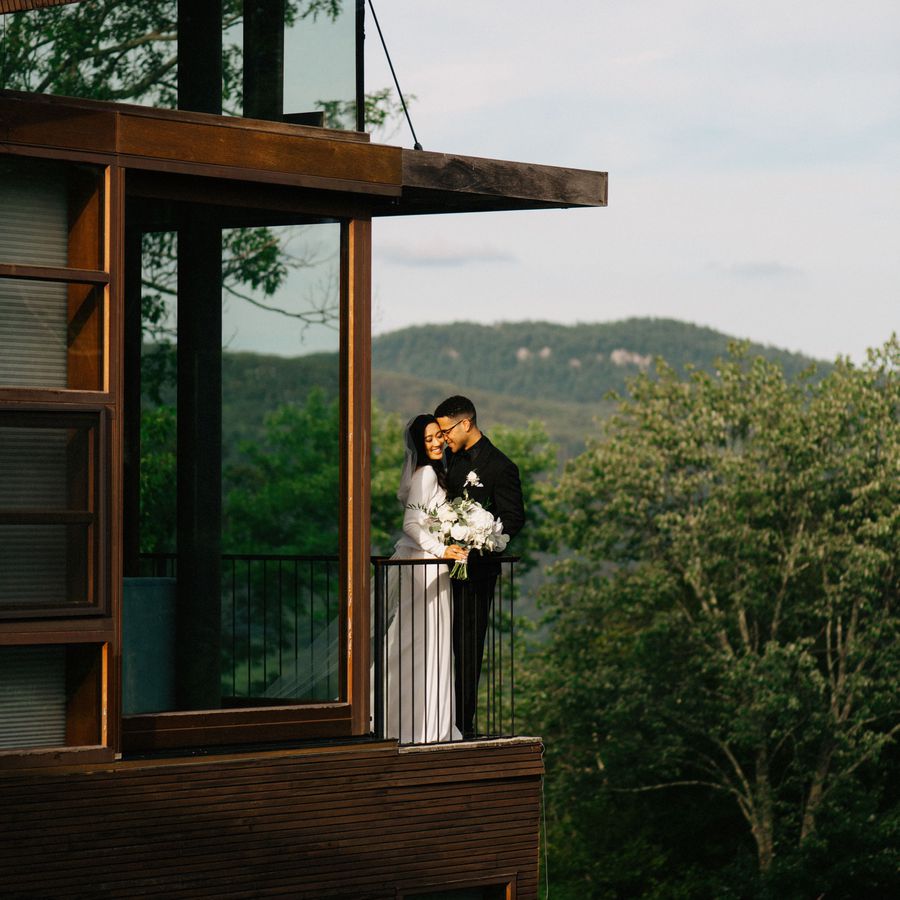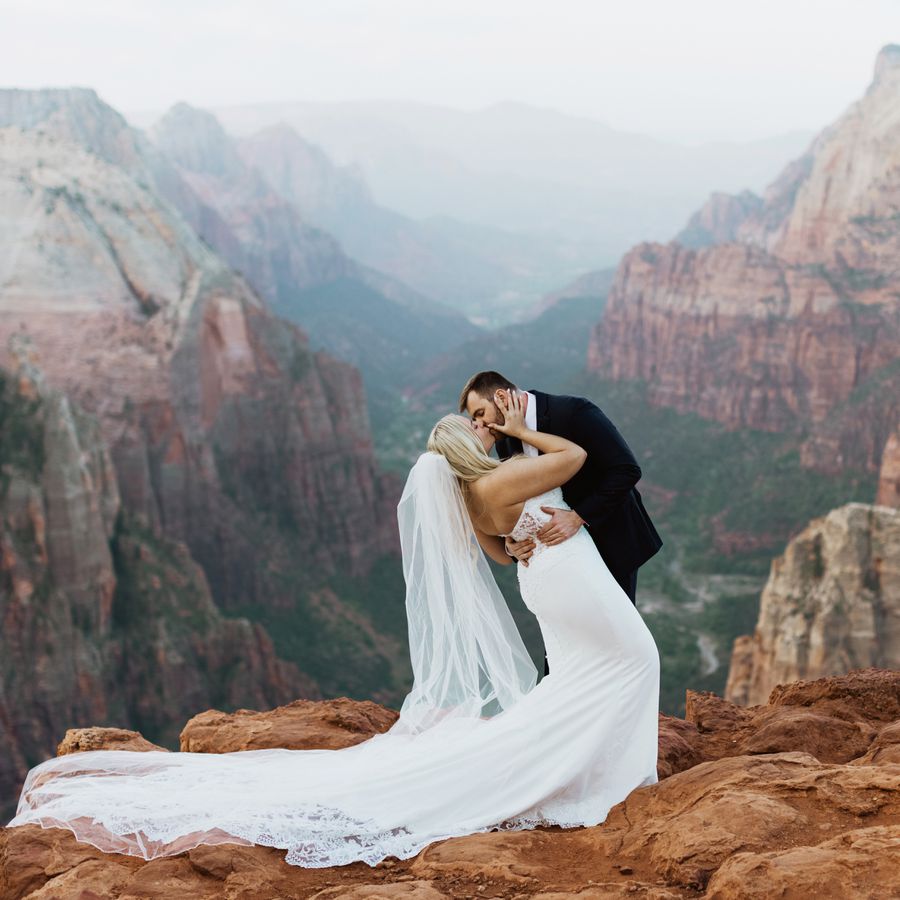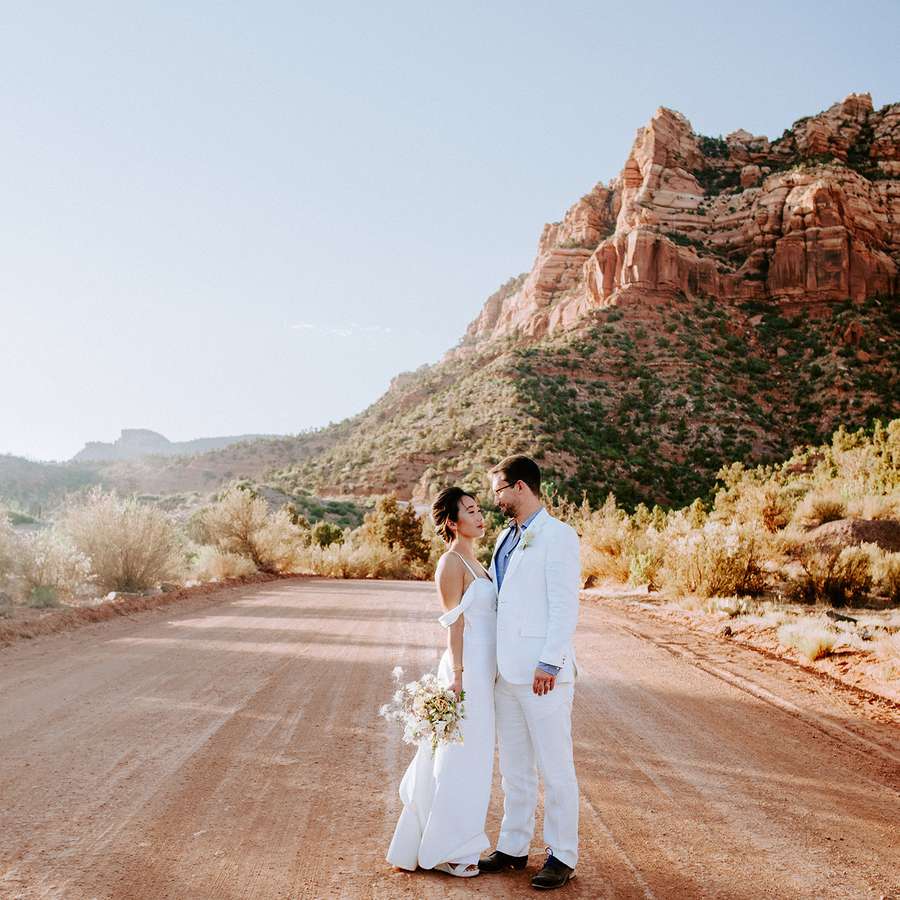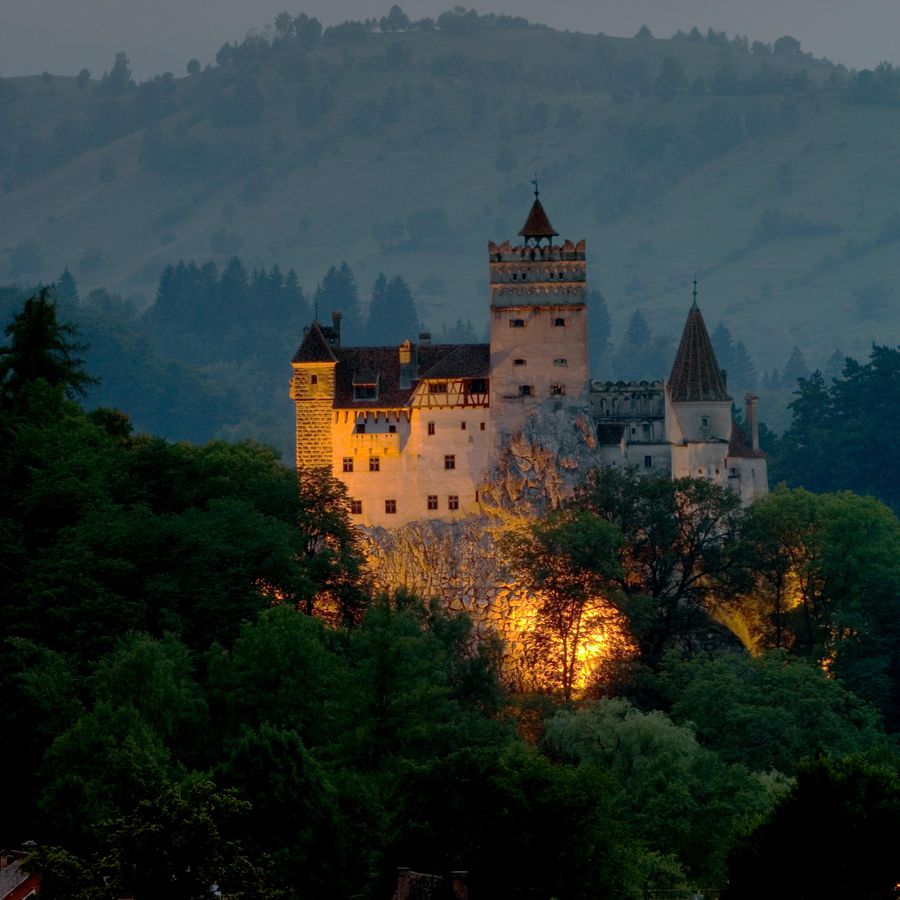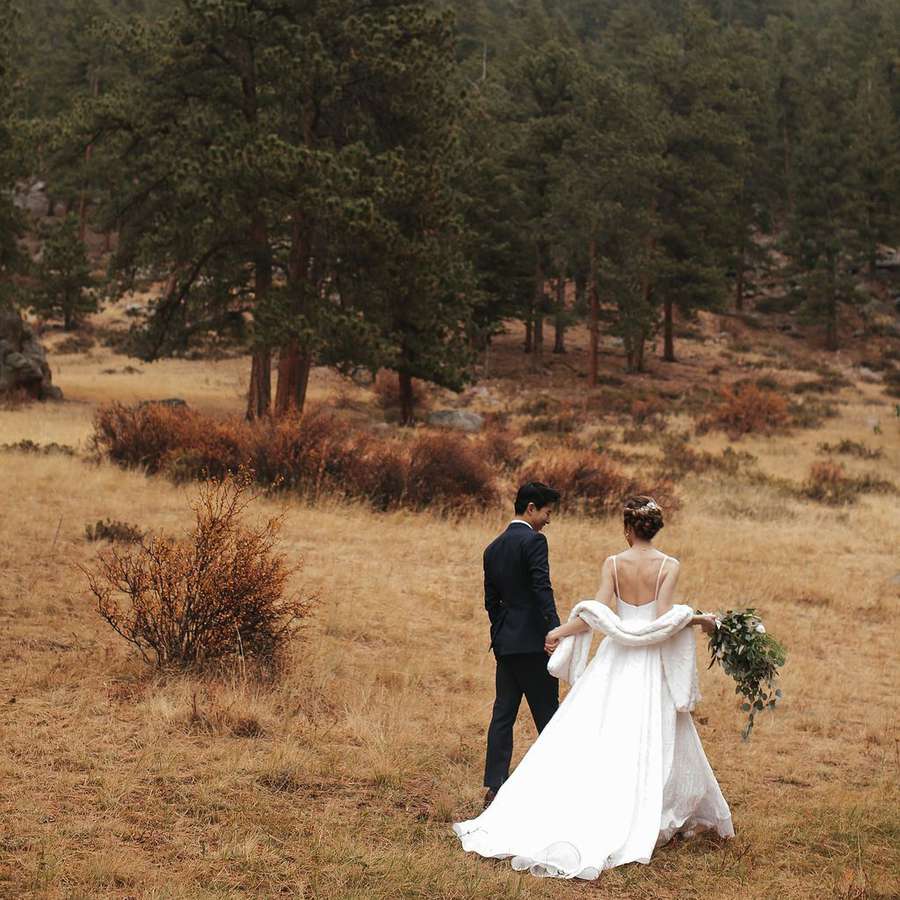:max_bytes(150000):strip_icc()/elopement-cb2ad3b16316493ebc77d1ffa2c95f4f.jpg)
Photo by Amanda Vaelynn
Elopements have become incredibly popular in recent years—especially for those couples who need to have a bit more flexibility during their wedding planning process. But eloping isn't just about keeping logistics and planning processes simple. What could be more romantic than the idea of getting married in a stunning, outdoor location such as your favorite hiking spot, in front of a waterfall, or with a background of snow-dusted mountain peaks? It allows for a more intimate ceremony, truly focusing on what matters most. But for couples planning to elope in a natural area, like a national park, for example, it's important to keep Leave No Trace guidelines in mind.
What Is a Leave No Trace Elopement?
A leave no trace elopement follows the leave no trace principles, which are a set of ethical guidelines that should be followed to best enjoy and protect the natural spaces we visit in our environment. The National Park Service shares these guidelines, along with state and local agencies, to encourage visitors to outdoor spaces to enjoy the area, while leaving no trace.
These guidelines still allow for a beautiful ceremony with plenty of elopement traditions incorporated, while taking care of public lands at the same time. While running off with your partner to tie the knot is totally romantic, there are a few key planning details to keep in mind if your elopement destination is a bit off-grid.
“Elopements and adventure weddings have become increasingly popular over the past half-decade,” says Erika Hernandez, owner of The Greatest Adventure Weddings. “This has added to the tens of millions of visitors to our national and state parks each year. And while the majority of people never intend to harm nature, our presence can certainly take a toll.”
Meet the Expert
Erika Hernandez is the owner of The Greatest Adventure Weddings, a full-service wedding and elopement planning company based in Seattle with a focus on adventure weddings.
There are plenty of things that can be impacted by elopements in remote places, including trail erosion, an increase in litter, and the effect it can have on animals in the area. “If you haven’t spent much time in the outdoors, or even if you have, you may not realize that our negative behaviors make a big impact,” says Hernandez.
To be sure you’re planning a responsible elopement, just a few key practices can make all the difference. Read on to learn how to plan a dreamy elopement of your own that leaves no trace.
How to Plan a Leave No Trace Elopement
To start planning an elopement that leaves no trace in the environment, it’s important to know where you’re going first. Below, find everything you need to know.
Make a Plan
There may be specific rules or regulations for the area you’re planning as your elopement site. “If you’ve never been, it’s important to call ahead to ask about permits or any other special considerations,” says Hernandez. Calling the ranger station in the area or looking online for specific permitting requirements will ensure you're not planning your elopement on a site that doesn't allow for that type of use.
As you plan, consider all weather conditions and be prepped for emergencies. Throwing an emergency kit in the car may make all the difference to ensure your big day runs smoothly.
Consider Other Visitors
Remember, outdoor spaces are public, so if you’re planning an elopement at a popular location, there may be other visitors to keep in mind. “The parks are for everyone to enjoy,” says Hernandez. “Even with a permit, in national or state parks, you can’t ask other people to leave an area.” Keep music or loud noises to a minimum to respect the other visitors to the area.
If you’re heading to a popular site or area, consider the date and time of your elopement. Hernandez suggests scheduling an elopement on a weekday to avoid times of high use. Be sure to also consider how many people will be making the trek with you. Will it just be you, your partner, your officiant, and a photographer? “Smaller groups do less damage and can make for a better experience,” says Hernandez.
Leave What You Find
Enjoying the outdoors comes with taking it all in with your eyes and mind, but it shouldn’t go further than that. The area in which you choose to elope should be left untouched, leaving it in a way that others would never know you were there. Bringing in arches, furniture, or other large decorations should be left off the planning list, and flowers or plants in the area should be left untouched. According to Hernandez, foraging or picking your own wildflower bouquet is illegal on federal lands such as national parks, national monuments, or national forests. If a wildflower-style bouquet is a must-have to match your elopement site, ask a local florist to create one for you.
Properly Dispose of Waste
If you’ve ever heard the phrase “pack it in, pack it out,” this is what it’s all about. One of the main components to leaving no trace is to be sure you’re picking up anything you’ve brought with you. “Take everything that isn’t natural to the area,” says Hernandez. This includes any trash, confetti, and even your bouquet.
If confetti is a must-have for your elopement, consider using something natural. Dried flower petals are a great option.
Travel (and Elope) on Durable Surfaces
Stick to the established trails if you’re heading up into the mountains or desert for an elopement. Maintained trails, rock, sand, gravel, dry grasses, and snow are all examples of durable surfaces. Traipsing through meadows in your wedding dress for the perfect photo has the potential to damage the landscape and have lasting effects on the area and the fragile ecosystem.
This practice also applies to your photographer. Be sure you hire a photographer that can work within your elopement site, without having to go too far off the path to get that perfect shot.
:max_bytes(150000):strip_icc()/SoCalStandard-DestinationWeddingPhotographer-UnderCanvasZionWedding-OliviaandGraham-636-ba9e199c701042a181797ac540b6e1e0.jpg)
Photo by SoCal Standard
Minimize Fire Danger and Impacts
Depending on your location, and if fires are permitted, it may be the perfect addition to your day. But it’s important to check if any burn bans are in place ahead of time.
To enjoy a campfire responsibly, only build a fire in established fire rings, and keep them small. Don’t leave your campfire unattended, and make certain that you've put out your campfire completely.
Incorporating sparklers or candles can be such a fun addition to your big day. If you’re opting to include either of these ideas, check for burn bans and pack out all waste.
Respect Wildlife
Whether you’re headed to a popular national park or a desolate mountaintop destination, chances are, wildlife may be present for your nuptials. It’s important to consider all wildlife, even if you’re only seeing birds and squirrels.
Don't feed any animals you encounter, whether intentionally or unintentionally. Throwing confetti, or even rice can harm an animal if it’s not part of its natural diet. If you spot an animal while on-site, only observe and enjoy it from a distance. Animals in the wild can be dangerous, and the last thing you want is an uninvited guest interrupting your ceremony or photo session.

